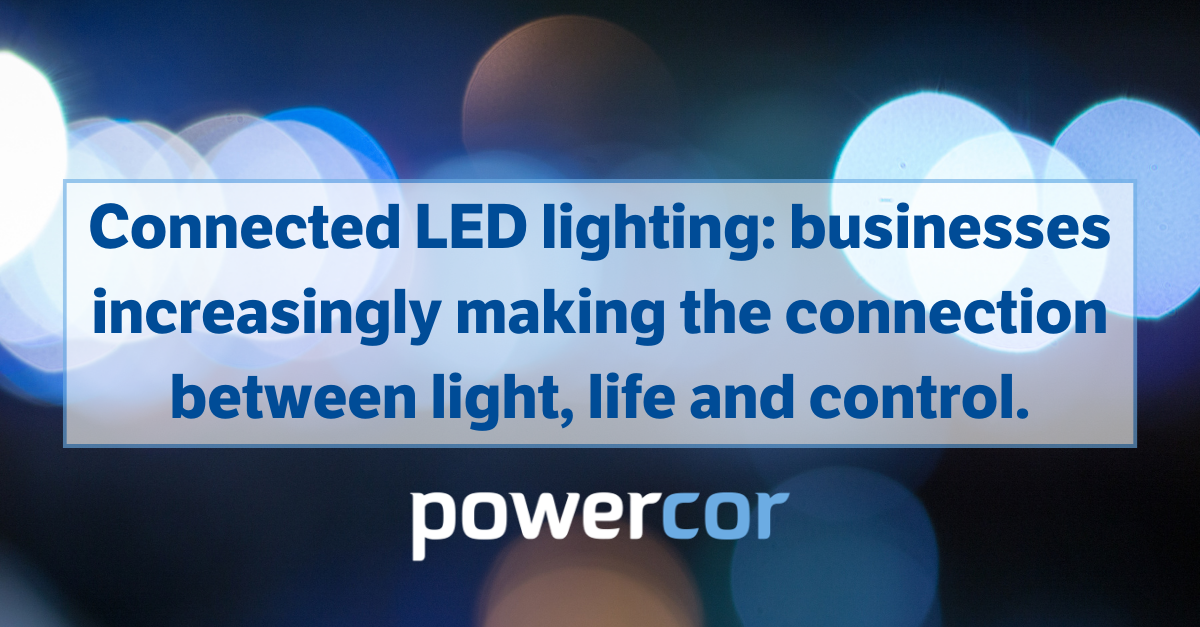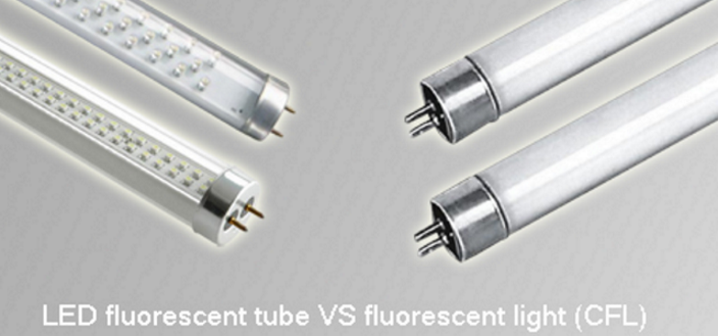Businesses across the UK are continuing to look at the ways in which they can deliver efficiencies at a time when sustainability moves ever higher on the agenda. And when it comes to sustainable and energy-efficient lighting, the future looks to be all about connected lighting.
Technology, artificial intelligence and the Internet of Things (IoT) are changing the way we do business. Commercial buildings have the opportunity to become smarter and with it create new and flexible ways to handle both lighting and energy consumption for those paying the bills.
Connected lighting is key to this making this ambition a reality.
Data is at the heart of connected lighting
Connected lighting comes in many forms. However, at its core is a system of light fixtures fitted with sensors, connected to a network, that are able to send and receive data.
The level of data that can be collected goes way beyond simply when the lights are on or off.
At a simple level, the sensors are able to turn specific lighting on only when needed, saving energy and cost. However, on a broader scale they allow for the mining of huge amounts of valuable data around office temperatures, the occupancy of a particular area or room and specific humidity levels. Companies can use this information to improve the management of office and workplace environments while tracking and controlling energy usage.
The systems are increasingly flexible and can now be controlled remotely including using Bluetooth to connect to hand-held devices.
Connected lighting has opened a world of possibilities for not only businesses but also town planners, local and national authorities.
Building connected-lighting capability
The technology is not new but has seen significant advances in recent years. The US in particular is at the forefront of connected-lighting usage and a key driver of research into the use and capabilities of the systems.
The following diagram show the construct of today’s all-digital connected-lighting systems, illustrating how data flows between a number of different installations and demonstrating the need for carefully planned system design:

A rapidly expanding market
Global technology intelligence firm ABI Research, recently published a report on the connected-lighting market and the scale of its predicted growth in the months and years to come.
ABI Research suggests that shipments of connected luminaires and related equipment into a new generation of smart buildings will grow to nearly 220 million units by 2030, a CAGR of 22.6%.
The report says that Network Lighting Control (NLC) systems – a technical standard for connected lighting systems – will deliver intelligent automation and management of lighting across a property and promises additional benefits available to LED lighting systems. By integrating lighting control with light level and occupancy sensors, energy efficiency is improved and can be leveraged for occupant comfort/safety, space utilisation, and, ultimately, building appeal.
“The ubiquity of lighting demand across commercial buildings, combined with efficiency and other benefits, will make smart lighting the first smart building investment for many properties,” says Jonathan Collins, Smart Homes & Buildings Research Director at ABI Research. “With a host of dynamic offerings, increasingly simple and flexible installation and maintenance, NLC is pushing smart building capabilities well beyond the traditional preserve of the largest and/or most prestigious projects,” he adds.
Two categories of connected lighting
Connected lighting systems generally fall into two categories: network control and Power-over-Ethernet.
The use of network control lighting will usually involve retrofitting a building’s existing light fixtures with sensors and wired or wireless controls to enable data collection.
Alternatively, a Power over Ethernet (PoE) system is designed to deliver DC power to devices over copper Ethernet cabling. This eliminates the need for separate power supplies and outlets. While PoE doesn’t deliver data capabilities, it does offer far wider options in terms of how and where Ethernet end devices can be placed.
Benefits of connected lighting
Whatever the choice of system, the benefits are significant.
Cost savings that can be made through the reduction in energy usage, the heightened efficiency of use, and the use of gathered data to create new and more cost-efficient ways of running commercial spaces such as offices and warehouses.
Businesses will quickly see a system’s cost recouped and be left with far lower ongoing operating costs.
Amongst the wide range of other connected-lighting benefits are:
- The use of unit specific controls provides the ability to create personalised lighting for individual work, group meetings and presentations.
- Lighting can be scheduled to reflect natural circadian rhythms, which can have a significant benefit to overall wellbeing and has been proven to have a positive impact on productivity.
- Sensors provide detailed energy usage information, and the ability to use lights only when and where they are needed, which has been found to deliver up to 40% energy saving compared to standard LED installations.
- The use of open technology makes connected lighting compatible with existing systems and fully scalable, so that staged installations can suit needs at the time.

Big names predict a bright future for connected lighting
Long-standing lighting giants such as Signify and Acuity Brands, as well as NLC specialists are predicting a market with significant potential.
Electrical giant Philips also believes the market is set to undergo significant growth.
“Imagine. The year is 2025. From every connected light powerful insights make cities, buildings and homes more liveable, sustainable and cost-efficient,” it explained. “Platforms and apps turn all of this big data into an incredible source of productivity and commercialisation. It optimises transport systems, manages air quality, improves our use of lighting, heating and air conditioning. It directs vehicles, monitors safety and household appliances.”
Philips added: “The global LED lighting market is expected to have reached US$54 billon by 2022, almost doubling in value.”
Systems are ready to go
The latest and most advanced connected-lighting technology is available from Powercor through our strategic partnerships with companies like Signify in the UK. Systems can be adapted to create a truly bespoke solution that exactly fits the needs of an individual or company.
We spend a huge amount of time inside, so investing in highly flexible connected-lighting system to improve working environments makes perfect sense.
To find out more on the benefits from switching up your lighting, contact sales@powercor.co.uk







